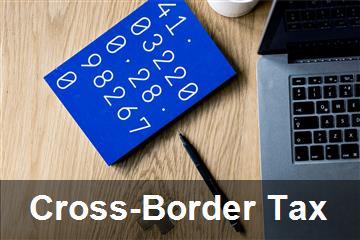
18 set 2024
The introduction of a new optional flat tax regime for certain Italian cross-border workers employed in Switzerland, effective from the 2024 tax period, marks a significant shift in fiscal policy.
This regime, outlined in Article 6 of the Omnibus Decree, targets residents within 20 km of the Swiss border who work in the Swiss frontier area.
These workers can opt for a 25% substitute tax on their Swiss-earned income, replacing the progressive Irpef tax and associated credits.
This change aims to align the tax burden of new cross-border workers with that of their predecessors.
However, the new regime comes with specific eligibility criteria and additional obligations, such as contributions to the National Health Service.
This analysis explores the implications, potential issues, and critical aspects of this new tax policy.
The recent introduction of a new optional flat tax regime for Italian cross-border workers employed in Switzerland, effective from the 2024 tax period, represents a notable shift in fiscal policy.
This regime, detailed in Article 6 of the Omnibus Decree, is designed for residents within 20 km of the Swiss border who are employed in the Swiss frontier area by Swiss employers.
These workers, previously not classified as cross-border workers under the old agreement, can now opt for a 25% substitute tax on their Swiss-earned income, replacing the progressive Irpef tax and associated credits.
This new tax regime is a result of the updated Italy-Switzerland Agreement on the taxation of cross-border workers, effective from January 1, 2024.
The previous agreement did not specify the list of municipalities eligible for cross-border worker status, which was determined by the cantons of Grisons, Ticino, and Valais.
The new agreement, however, includes a specific list of eligible municipalities, expanding the definition of cross-border workers.
The new regime aims to align the tax burden of new cross-border workers with that of their predecessors, who benefit from a transitional regime under Article 9 of the new agreement.
This transitional regime applies to residents of municipalities that have historically allowed the application of the cross-border worker tax regime.
To qualify for the new regime, workers must meet several criteria.
They must have been employed in Switzerland in the cantons of Grisons, Ticino, or Valais by a Swiss employer between December 31, 2018, and July 17, 2023.
Additionally, their income must be taxed at source in Switzerland on 80% of the taxable base, as per Article 3 of the agreement.
They must also reside in one of the municipalities listed in Annex 1 of the Omnibus Decree.
The option to apply the new regime is exercised in the income tax return, and the substitute tax must be paid by the deadline for the balance of income taxes.
The amount of the substitute tax is calculated by converting the taxes paid in Switzerland into euros using the average annual exchange rate for the tax period in which the income is earned.
Furthermore, residents of certain municipalities in the provinces of Brescia and Sondrio, listed in Annex 2 of the decree, who have worked in the cantons of Ticino and Valais during the specified period, are also eligible for the new regime.
Critical Aspects and Potential Issues:
1. Eligibility Criteria: The specific requirements may exclude some workers who do not meet the exact criteria, potentially leading to disputes.2. Administrative Burden: The need to convert Swiss taxes to euros and the additional reporting requirements may increase the administrative burden on taxpayers.
3. Health Service Contributions: The obligation to contribute to the National Health Service, with only 20% of the cost being deductible, may be seen as an additional financial burden.
Typical Pitfalls and Errors:
1. Misunderstanding Eligibility: Workers may incorrectly assume they qualify without meeting all criteria.2. Incorrect Tax Calculations: Errors in converting Swiss taxes to euros could lead to incorrect tax payments.
3. Overlooking Health Contributions: Failing to account for the National Health Service contributions could result in unexpected costs.
Suggestions and Useful Indications:
1. Clarify Eligibility: Ensure all criteria are clearly understood and met before opting for the new regime.2. Accurate Calculations: Use reliable methods for currency conversion and tax calculations to avoid errors.
3. Plan for Health Contributions: Budget for the National Health Service contributions to avoid financial surprises.
By understanding these aspects, cross-border workers can better navigate the new tax regime and make informed decisions about their fiscal responsibilities.

